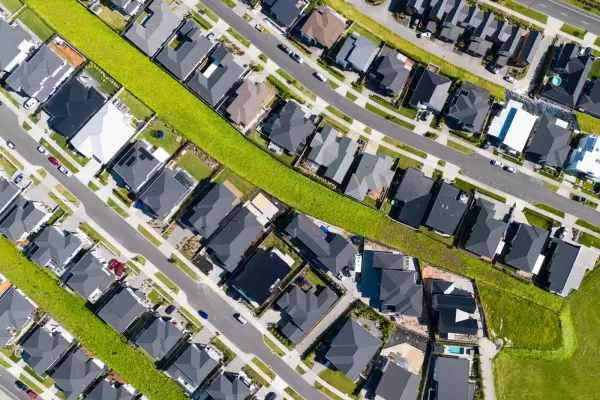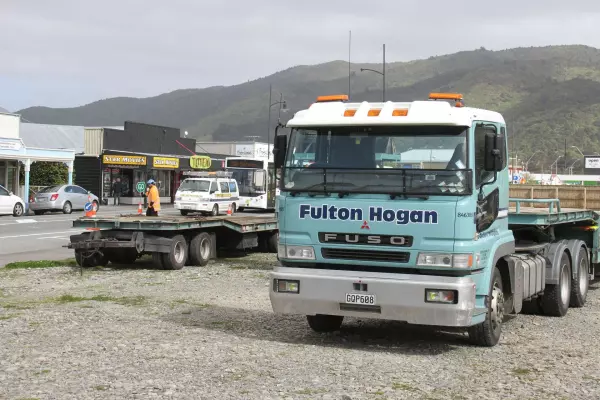The political rhetoric of going "hard and fast" has been widely used and largely uncritically accepted this week as the government has gone from scarily somnolent 10 days ago to taking actions of unprecedented scale to try to meet the huge health and economic challenges of covid-19.
Well, it's still not enough.
Not by a long chalk.
If you're looking for proof that the government is still pulling its punches, here are three pieces of evidence.
A weak Air NZ decision
Firstly, the most recent: today's $900 million loan package for Air New Zealand.
Too small and it should have been equity, not a loan.
If Air New Zealand is really going from a $6 billion turnover business to a $1 billion turnover business, it will need a direct equity injection bail-out in the billions of dollars. This is an existential crisis for the national carrier on the same or greater scale as its near-failure in 2001, when only the power of the Crown balance sheet could save it.
Sure, such a bail-out could leave the taxpayer owning 80 or 90 percent of Air New Zealand, instead of 52 percent at present. No rational private investor is going to participate in a rights issue at a time like this.
But it has to be done. Today's decision is underwhelming. A plummeting Air NZ share price was probably inevitable this morning whatever the government decided, but it need not have been so great. The global reality is that of today's 800-odd airlines, there might be 40 left in a year's time. This country needs Air NZ to be one of them.
Time for lockdown is now
Secondly, our schools are still open, public transport is still operating, your correspondent is flying between New Zealand cities today and expects to be able to next week, on the basis of government decisions on physical isolation so far.
Yet all the best expert medical advice says New Zealand has just enough time, given current infection rates, to take the next necessary steps.
To date, Singapore, China and Taiwan appear to have achieved containment of the virus. It has been stopped in its tracks in China - an incredible feat. Wherever it pops up now, it is being stamped on. China is ahead of the curve in a way that Italy or Iran is not.
Most worrying for us is that Australia has missed the boat on that opportunity. Within two or three weeks, so will New Zealand unless the government becomes far more radical in its thinking about what New Zealanders will accept to minimise the huge and inevitable impact of this global pandemic.
As the rumour of a national lockdown spread like wildfire around the country yesterday, the striking thing was how many people reacted by welcoming it.
The government may still be thinking there is too much political risk in such a massive curtailment of daily life as we all know it. That may be a miscalculation, just as it miscalculated the public mood up until the middle of last week, when its actions went suddenly from incremental to monumental.
Another $30 billion at least
That leads to the third piece of evidence that the government is still moving too slowly and cautiously: its economic prescription so far.
This week's $12.1 billion fiscal stimulus package was bigger than anything any previous government has done. There is no niggling on that score.
It was also described as a down payment and is acknowledged to be a rushed job.
It came together after the government realised, late last week, that it was facing a collapse in its political support unless it acted more boldly.
The border lockdown and Tuesday's 'phase one' package were the first result. The four-tier alert system announced Saturday, March 21, was the next.
Whatever 'phase two' looks like, it needs to be way bigger again. Think $30 billion-plus to cope with the fact that, conservatively, the economy may shrink by at least 10 percent in the year ahead, with even more widespread business failures and double-digit unemployment without action of that size.
Even if the plans for phase two are not clear yet, the government should be signalling now that it is thinking on this sort of grand scale.
Make banks prove they're lending
It should also be insisting the Reserve Bank monitor the trading banks for evidence that they are truly relaxing their credit rules and state clearly that even if the private banks can't cope with negative interest rates for retail products, that should not be a barrier to the central bank taking the official cash rate below zero, if necessary.
Bizarre as it sounds, the RBNZ's determination not to go to negative rates suggests it may too be exercising similar caution to the government's, in spite of the unprecedented boldness of moves already announced.
There is some evidence that ministerial thinking is moving in the direction of swifter, bigger actions.
Most telling is that the language of 'flattening the curve' has suddenly disappeared, after getting its first outing just last Saturday.
No curve to flatten - yet
New Zealand's current lucky position is that there is, as yet, no curve to flatten.
There is a fast-narrowing window of opportunity to keep it that way. There will be outbreaks - small waves - that the health system should be able to cope with if the virus's spread can be contained in the way that just a few countries in Asia - experienced already in pandemics - have managed so far.
We need to follow them now, hard and fast, for the best chance of limiting both the health and economic consequences of one of the biggest challenges the world has faced outside of global warfare.




